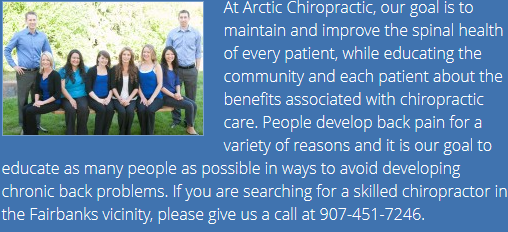Chiropractic Medicine Has Evolved Over The Years
Back pain is one of the most common chronic ailments in the world, with an estimated 625 million lower-back pain sufferers worldwide. This is a difficult condition to live with and can make life unbearable for some. The chiropractic profession is an important resource for people with this affliction. Chiropractors specialize in reducing pain caused by injury, deformity or weakness of the spine.
There are multiple ways to develop chronic back pain so anyone can suffer from it, regardless of socioeconomic status. The most well known way is simply ageing, with the onset usually occurring between the ages of thirty and forty. As the body grows older, the discs of cartilage between our vertebrae can begin to wear down, causing the sections to rub together and reduce flexibility. Bone weakness caused by vitamin deficiency is also a very common way of developing back issues. Bone weakness is more common in older people, because the human body slowly loses its ability to process vitamins properly.
One's lifestyle also has a large factor in the development of back pain. This can include whether you have a physically demanding job, with lifting and pulling, or even just not having proper posture while working a desk job. Smoking can also hamper the delivery of nutrients to the spine, and can lead to weakness in the structure of the spine and slowed healing of injuries to the area.
Of course back pain can develop from other diseases, such as cancer, osteoarthritis, herniated discs and spondylolisthesis. Serious traumatic injury to the spine such as being in a car accident can cause a verity of injuries such as deforming the spine or inhibiting the flow of blood or interfering with the nervous pathways.
You can reduce your chances of developing back pain in a multitude of ways. The bones thrive on not only calcium, but vitamin D. Vitamin D helps to absorb the calcium more efficiently. The average recommended intake of calcium is about 1000 mg or 1000-2000 IU (international units) per day. Keep in mind the amount of calcium for men over seventy and post-menopausal women is around 1,200 mg.
Changing seemingly insignificant things in your daily routine can have, a profound impact on whether or not you need to deal with back pain. If you have a job that involves lifting heavy objects, such as a factory worker, insure you follow the proper lifting procedure: bend your knees, while keeping your back straight, take firm hold of the object and then use your legs as leverage instead of your back. Use the inverse of this procedure for putting the object down.
Posture is something that is overlooked these days but it is still essential for keeping bones aligned properly. To properly achieve this, the feet need to be the same width apart as the shoulders, your chest should be slightly lifted outwards and most of your weight balanced on the heels. The eyes, shoulders, hips and feet should also be together in a straight line.
Chiropractic medicine has evolved over the years, but the concentration on spinal manipulation has remained the same. When it founded in 1895 (possibly taking inspiration from other cultures), D.D. Palmer believed that he cured the deafness of a patient by using spinal manipulation techniques. Of course these days we know that that's not exactly true, but spinal manipulation is a wonderful alternative to surgery and medication. The idea of spinal manipulation is usually to return movement to spines that have been injured in an accident or reduce pressure on nerves that are being pinched.
The cervical area of the spine is the most delicate part of the spine do to needing to support the head as well as fulfilling all of the structure's usual responsibilities. Adjusting the cervical spine is usually done while the patient is lying on their back. While in this position, the head is rotated to its limit and then a high -velocity-low-amplitude (HVLA) is applied. A variation can be done while the patient is laying on their stomach, headpiece slightly tilted and applying force to a facet joint. The second method is best used if the doctor do not wish to strain the patient's neck with unnecessary rotation.
Lumbar spine manipulation is done while the patient is laying on their side (lateral position). The doctor takes hold of the spinous process of the vertebrae and the spine is twisted until the joint has reached its limits. The forearm is placed over the ischial tuberosity (lower part of the pelvis), before applying an HVLA to the area.
Thoracic spine manipulation is usually applied in a lateral position. When the patient is ready, the doctor asks them to take a deep breath, and pushes on the transverse processes near the shoulders to slowly push the air from the patient. After the breath has been fully released, a quick and firm impulse is applied to the area. Another form of thoracic manipulation is used on a patient while they are sitting up in a flexion position. A cupped hand is placed on the spinous process and asks the patient to take in a deep breath. As the patient slowly lets out a deep breath, they are lowered to the examination table. Once they are laying supine, an HVLA is applied.
While it is best for people to try and prevent back pain from developing, with good lifestyle choices, sometimes circumstances conspire to make back pain happen anyway. With that being said: chiropractic medicine is and will continue to be an important service to those with chronic back and wish to find relief. Let's hope that this field of medicine will continue to grow and become an even better.





 Home
Home




